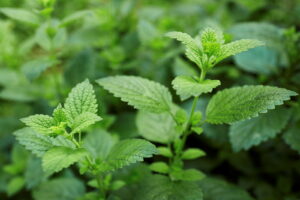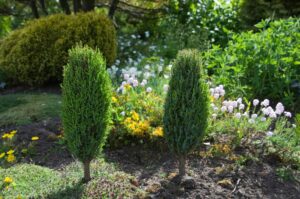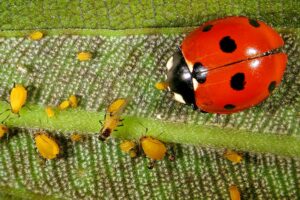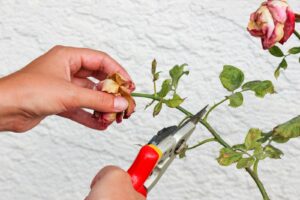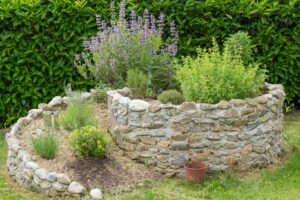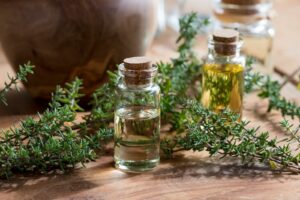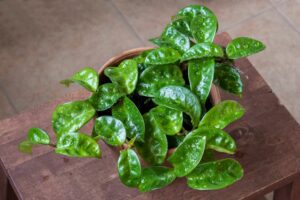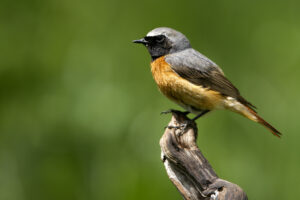Maranta leuconeura: care and propagation of the prayer plant
This plant’s colourfully patterned leaves fold up at night and look like praying hands, hence it is commonly known as the prayer plant.

Maranta leuconeura is a popular houseplant because of its beautiful, colourfully patterned leaves. Although it is not one of the easiest houseplants to care for, it rewards your efforts with unparalleled decorative leaves. Read on to find out all about Maranta leuconeura and how to care for and propagate it.
Contents
Maranta leuconeura: origin and properties
Maranta leuconeura is a tropical plant that originates from the rainforests of Brazil and is often kept as a houseplant in our part of the world. These plants belong to the arrowroot family known as Marantaceae and are known for their impressively patterned leaves, which they fold upwards at night. Calathea, a different genus within the same family, do the same, and both plant genera are often referred to collectively and individually as prayer plants. This is probably because their folded-up leaves resemble praying hands.
The oval-shaped leaves display colourful patterns that vary depending on the variety. In many varieties, the leaf veins are red and contrast strongly with the green leaf blade, which can be interspersed with light or dark spots. The prayer plant is a clump-forming herbaceous evergreen that can grow up to 30cm high, although it can take a while for it to reach this size. Maranta leuconeura leaves grow from its bulbous rhizomes, grow up to 15cm tall and sit on the end of thin stems. In nature, Maranta prayer plants produce small, white or pink flowers, but these are rarely seen in indoor cultivation.

Tip: as new discoveries in botany can quickly change the affiliations of species and genera, Maranta leuconeura is sometimes still known by older names such as Calathea leuconeura or Maranta kerchoveana. However, the currently recognised botanical name is Maranta leuconeura. As Calatheas and Marantas are very closely related and look quite similar, distinguishing them can be difficult.
Our favourite Maranta leuconeura varieties
Although Maranta leuconeura exhibits a beautiful, natural leaf pattern, there are many other Maranta prayer plant varieties that have even more to offer in terms of colour and pattern. Here are some of the most beautiful Maranta varieties:
- Maranta leuconeura ‘Fascinator’: red leaf veining and light as well as dark green spots.

- Maranta leuconeura ‘Kerchoveana’: light green veins and brownish spots.
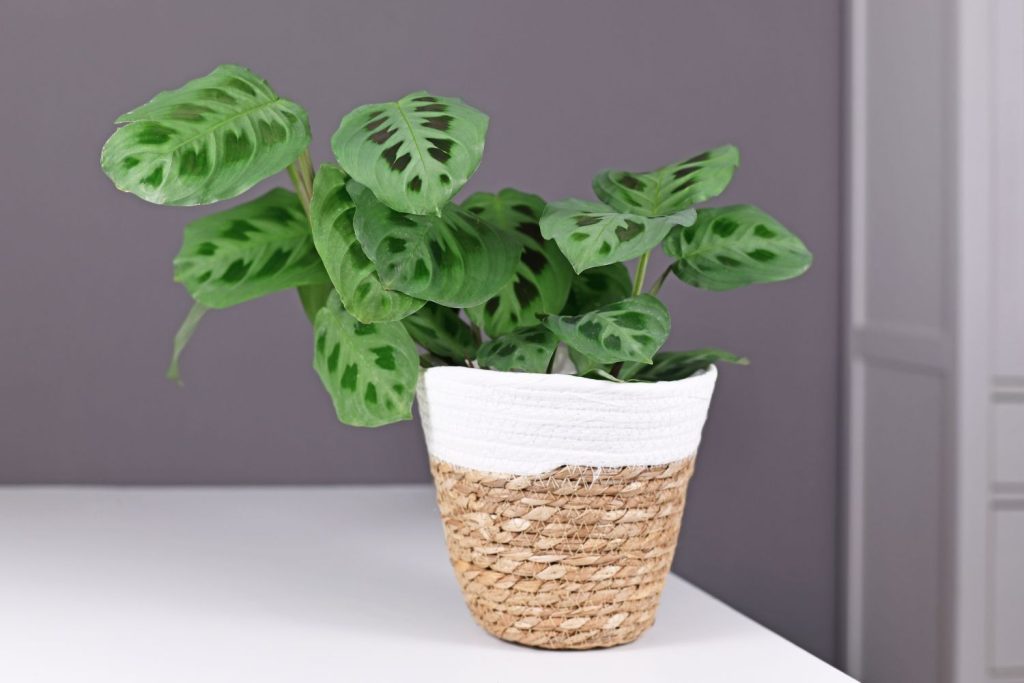
- Maranta leuconeura ‘Variegata’: dark green and cream variegated leaves with dark spots.
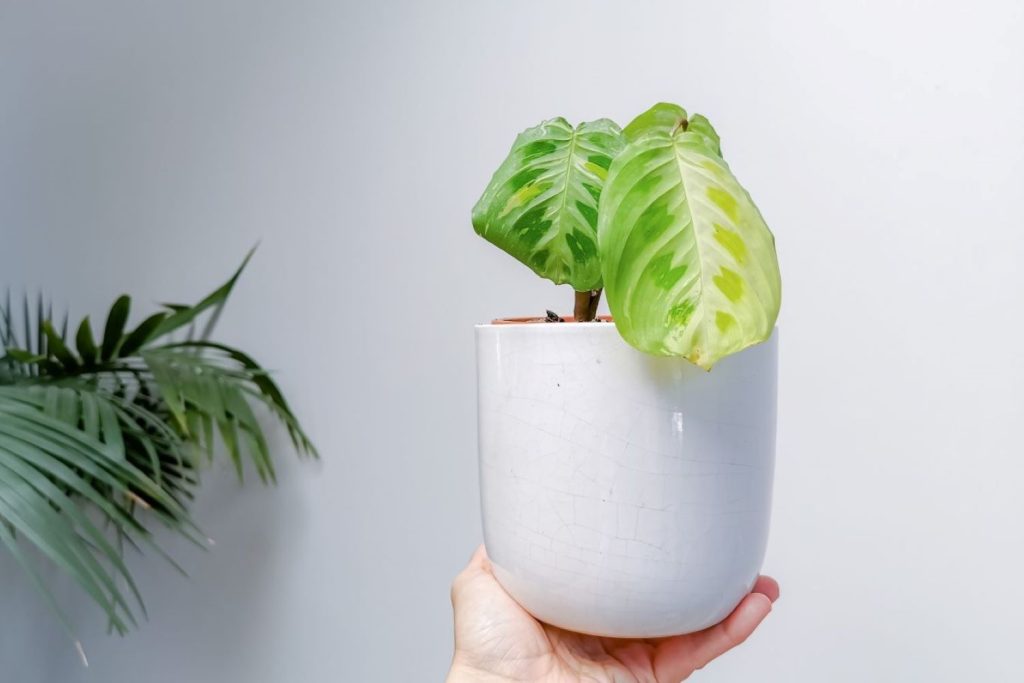
- Maranta leuconeura ‘Amabilis’: very light green leaves with dark stripes.

- Maranta leuconeura ‘Tricolor’: from the main vein, the leaves change colour from light green to dark green and then back to light green from the inside out; red leaf veins.

- Maranta leuconeura ‘Silverband’: dark green leaves with silvery veins and a silver central stripe.
- Maranta leuconeura ‘Green Stripe’: grass-green leaves with dark, brown-red spots.
Growing Maranta leuconeura
Maranta leuconeura is a tropical plant that needs warmth and high humidity to thrive. It prefers partially shaded locations. Do not place your prayer plant in too bright a spot. Although it needs enough light to grow well, too much light can cause the pattern on the leaves to fade.
The temperature during the growing season from spring to autumn needs to be around 23 to 25 °C. In winter, it can be a little cooler at around 20 °C. Prayer plants do not tolerate cold well at all, so do not allow temperatures to drop below 18 °C.
A high humidity of about 60% is ideal for the Maranta leuconeura. Placing the plant on a saucer with expanded clay and water is a good idea. The expanded clay prevents the roots from standing in water, while the water in the saucer evaporates and increases the humidity around the plant.
Tip: before plant breeders got hold of Marantas, they were far too demanding for most indoor settings and could only be kept as houseplants in tropical plant conservatories or small greenhouses. With new varieties, it is now somewhat easier to keep these extravagant plants at home. However, even new varieties can be quite demanding.
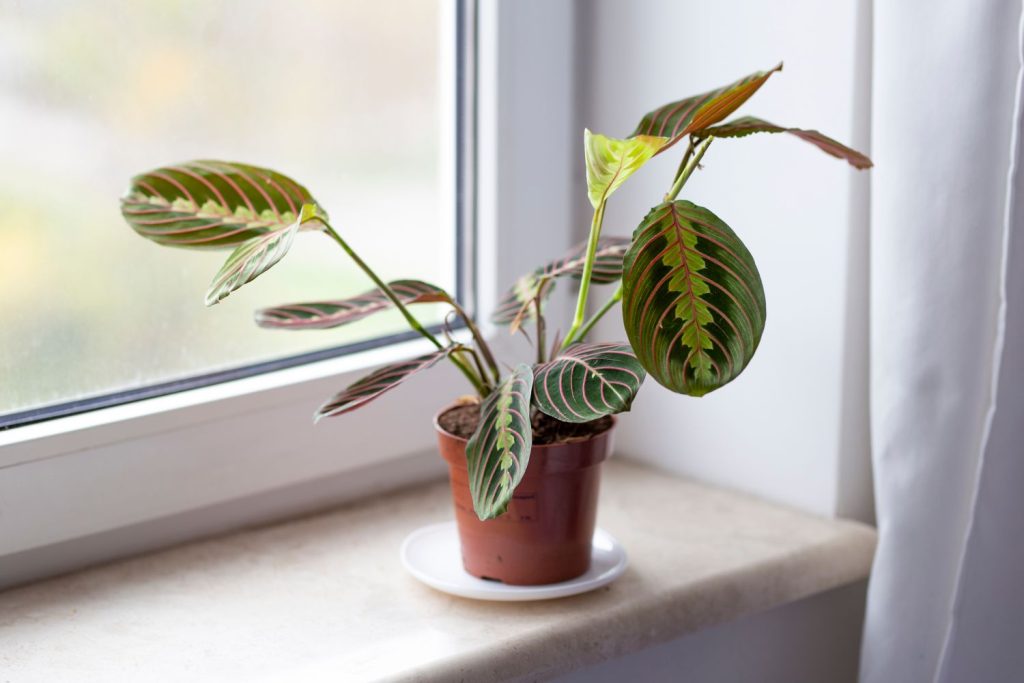
Prayer plants prefer loose, well-draining soil that is rich in nutrients and has a high humus content. The soil should also have a rather low pH value, i.e. be in the slightly acidic range. Our Plantura Organic All Purpose Compost is well-suited as it is slightly acidic and contains all the key nutrients. It also retains its loose structure for a long time and can store water well.
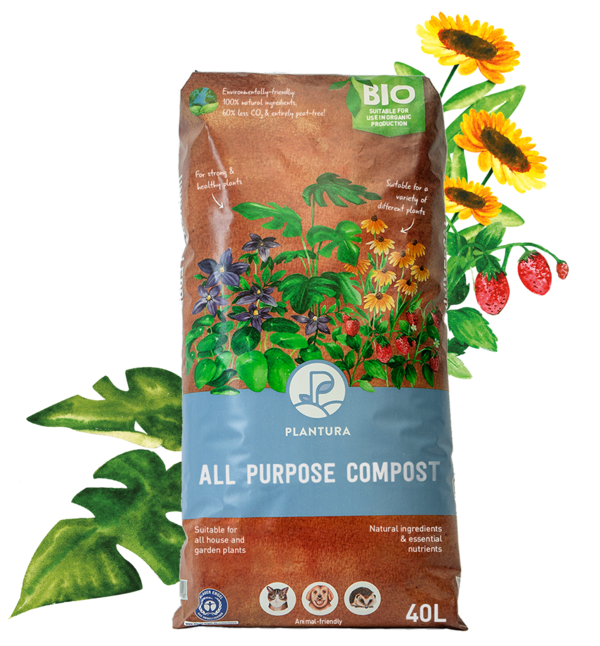
- Perfect for all your house, garden & balcony plants
- For strong & healthy plants as well as an active soil life
- Peat-free & organic soil: CO2-saving composition
Before planting, create a drainage layer of coarse material at the bottom of the pot to allow excess water to run off.
Prayer plant care
Maranta leuconeura is not one of the easiest houseplants to care for, but with a little finesse you can enjoy this tropical plant for a long time.
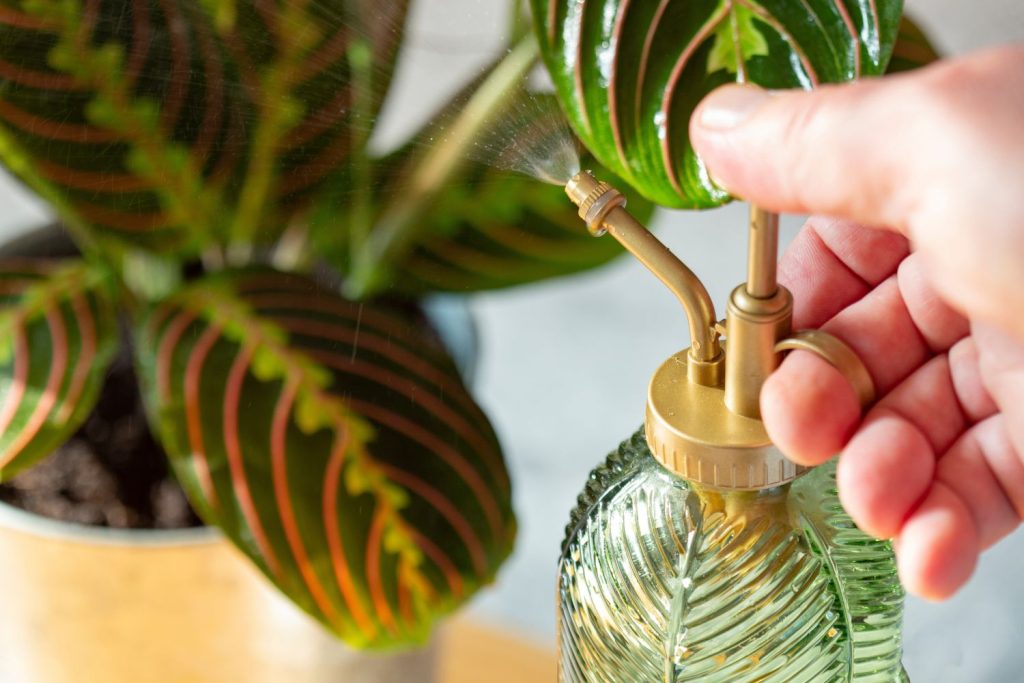
Water your prayer plant regularly throughout the growing season. The soil should always feel slightly moist. Never allow the root ball to dry out. Use your finger to check if the upper layer of soil is dry. If it is, give your Maranta a drink. Since prayer plants need an acidic substrate and do not tolerate lime, only water with room temperature, lime-free water such as rainwater.
Fertilise your prayer plant every two to four weeks during the growing season, ideally using a liquid fertiliser, such as our Plantura Liquid Houseplant Food. This fertiliser is easy to apply by diluting into water and watering your plant as usual. This way, the nutrients become directly available to the plant. Maranta leuconera do not need fertilising in winter.

- Perfect for a wide variety of houseplants & foliage plants
- Liquid fertiliser for robust plants & healthy growth
- Quick & easy application - child & pet friendly
As Maranta leuconeura are slow growers, pruning is not necessary. However, if you notice leaf discolouration or if they dry out, you can simply cut them off at the base.
Every two to three years, repot your prayer plant into a larger pot with fresh soil in spring. Young plants can also be repotted annually. Always choose a pot one size up from the current one.
Why do my prayer plants have yellow leaves? As with most houseplants, there are numerous causes of yellow leaves on prayer plants. These include:
- Incorrect water supply: prayer plants do not tolerate dryness and may drop their foliage or get dry leaf tips and margins as a result. If the soil smells musty and water cannot drain away, your plant may be at risk of root rot. In this case, repot it and give it fresh soil. Always use soft water for watering, as too much lime can lead to a nutrient deficiency.
- Too many or not enough nutrients: fertilise regularly but not excessively during the growing season and repot your Maranta prayer plant every few years.
- Too much light: if the leaves turn light to pale yellow, your prayer plant may be in too bright a spot with direct sunlight. Move to a bright, semi-shady spot.
- Too warm: prayer plants do not tolerate locations that are too hot and it can lead to dry leaf margins and even the death of entire leaves.
- Pests: occasionally pests such as spider mites or harmful nematodes appear on Marantas. Regularly check the leaves and roots for infestation. Spider mites often turn up when the air is dry, so misting your plants regularly helps to prevent pest infestations.

Maranta prayer plant propagation
Growing prayer plants can be challenging enough, and propagating your Maranta leuconeura is not so easy either. The easiest way is to divide a healthy mother plant. It is best to propagate in spring, as spring marks the beginning of the active growth period and means young plants can establish themselves well. To divide your Maranta, carefully lift the mother plant out of the pot and separate the rhizome into two parts with a knife. Make sure both parts have some leaves and then plant them into separate pots. After dividing, keep the two prayer plants somewhere warm and relatively humid. To increase the humidity, put a plastic bag over the plant until new leaves appear, just make sure to air everything out regularly. Place the plants in a bright, evenly warm spot protected from draughts.
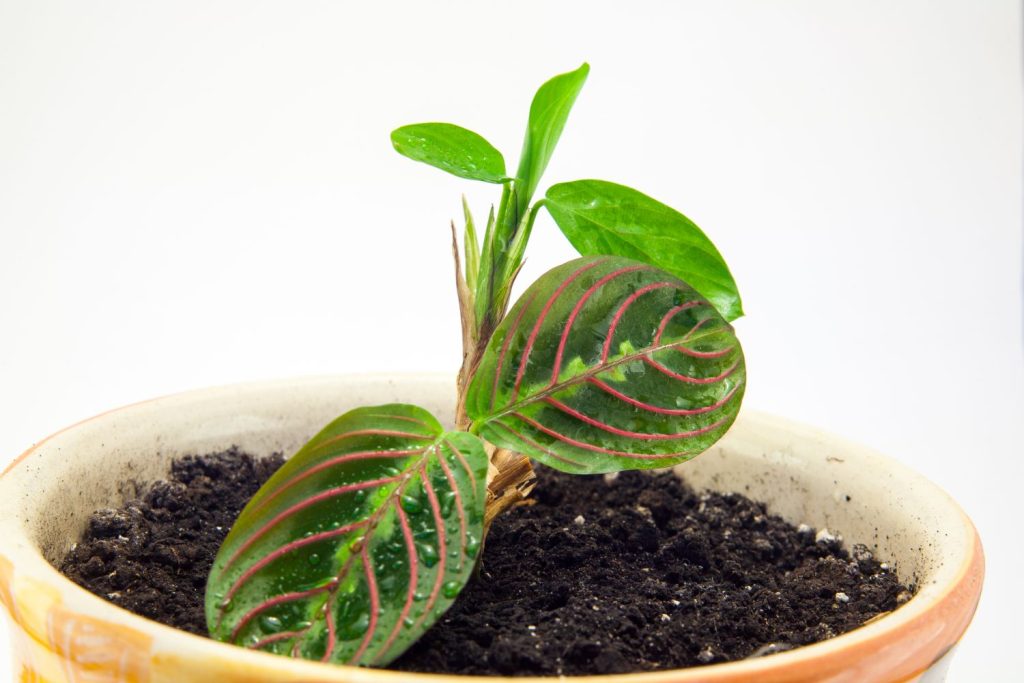
An alternative method of propagating Maranta leuconeura is by taking head cuttings. To do this, cut off leafy shoots about 10 to 15cm long with a sharp knife in spring. Put them in a growing medium and keep them warm and moist.
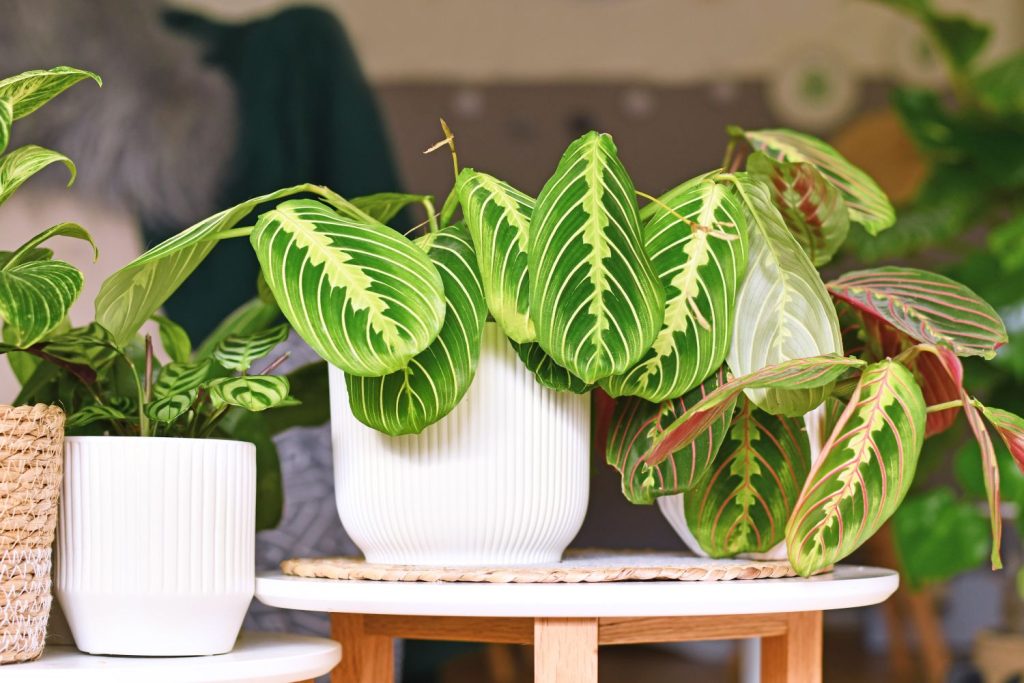
Is Maranta leuconeura poisonous?
While Maranta leuconeura is not poisonous, it is not considered edible and there is no reason to consume it. Prayer plants are also non-toxic to pets, so are fine to have in your house if you have furry friends.
Because of its similar appearance, Maranta leuconeura is sometimes confused with Calathea makoyana. This species is also a popular houseplant, but is a little easier to care for. See our dedicated article on Calathea makoyana to learn how to care for them.


